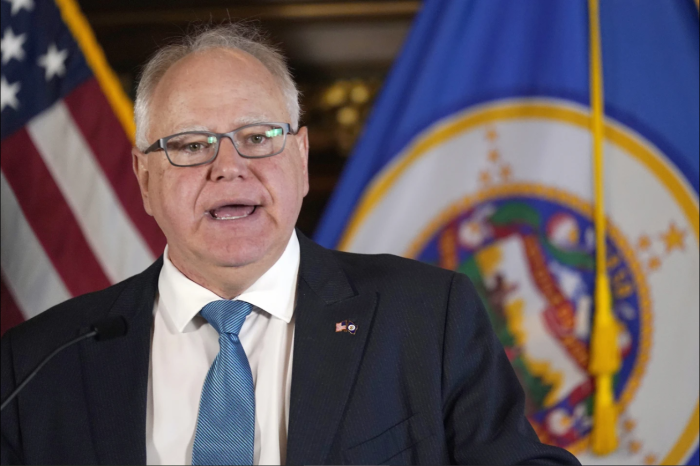Local, state health officials address impacts of anticipated Medicaid cuts
On Wednesday, Gov. Tim Walz and state health officials gathered at M Health Fairview St. John’s Hospital in Maplewood to address Medicaid cuts included in the recently passed “One Big Beautiful Bill Act,” signed into law in early July.
Meanwhile, during North Shore Health’s July board meeting, CEO Kimber Wraalstad outlined the knowns and unknowns of the new law’s impact on the local hospital.
Walz spoke on the 60th anniversary of the creation of Medicaid and Medicare and proclaimed July 30, 2025 as Medicaid and Medicare Day in the State of Minnesota.
“For 60 years, Medicaid has helped Minnesotans live longer, healthier lives – it’s a lifeline for hospitals and clinics across our state,” said Governor Walz. “President Trump is putting that lifeline at risk. Minnesota will do what we’ve always done: protect access to care, support our providers, and fight for the dignity and health of every Minnesotan – no matter their ZIP code or income. But President Trump and Republicans in Congress have made that work much more difficult.”
“I don’t want people to be scared,” Wraalstad told WTIP. “I want them to be aware.”
Many of the Medicaid-related provisions in the Republican-backed law do not take effect immediately. Changes are set to roll out in phases through the remainder of 2025, 2026, and 2027, with some impacts delayed until 2032.
Among the most significant changes are adjustments to Medicaid eligibility, which affect how individuals qualify for health coverage.
“This is a paperwork challenge for both enrollees and counties, and I’ll note that we here at DHS call this a work reporting requirement, because the large majority of working-age people in Medicaid already work or will be exempt under the new federal law,” said State Medicaid Director John Connolly, joining Walz at St. John’s Hospital.
Reporting requirements may be especially difficult for working families with limited time and for nursing home residents who struggle with complex paperwork.
“Eighty-five percent of our residents are covered by Medicaid,” Wraalstad told WTIP. “That means they rely on families and others to help them with, you know, completing their eligibility. And it’s a challenging process, and there are some people that have it just become so overwhelming for them. And we can’t do it for them.”
The full impact of the cuts remains uncertain. The state estimates it will lose $1.1 billion in health care funding and expects increased out-of-pocket costs for enrollees, along with added administrative burdens for hospitals and counties.
“When we look at private health insurance, we’d expect health insurance premiums will raise by at least for at least 89,000 Minnesotans, and more than 62,000 Minnesotans are expected to drop their coverage,” Commissioner at Minnesota Management and Budget, Aaron Campbell, said at Walz’s press conference.
The law may uniquely impact rural healthcare and critical access hospitals, which lawmakers tried to address by creating the Rural Health Transformation Fund.
“I have real concerns about that,” Wraalstad told WTIP. “When I look through what some of the eligibility is and what some of the other stuff is doing, I am not confident in that.”
WTIP spoke with North Shore Health CEO Kimber Wraalstad about the changes to Medicaid and other topics from the recent board meetings. The audio of that conversation can be found below.














